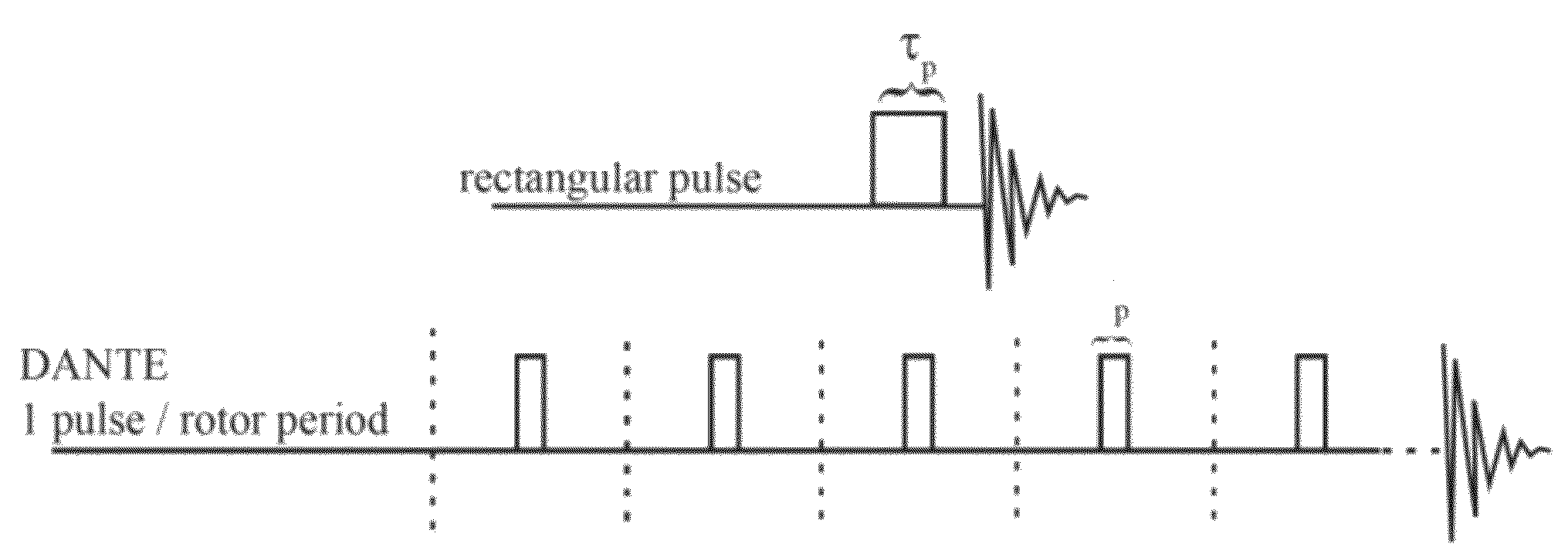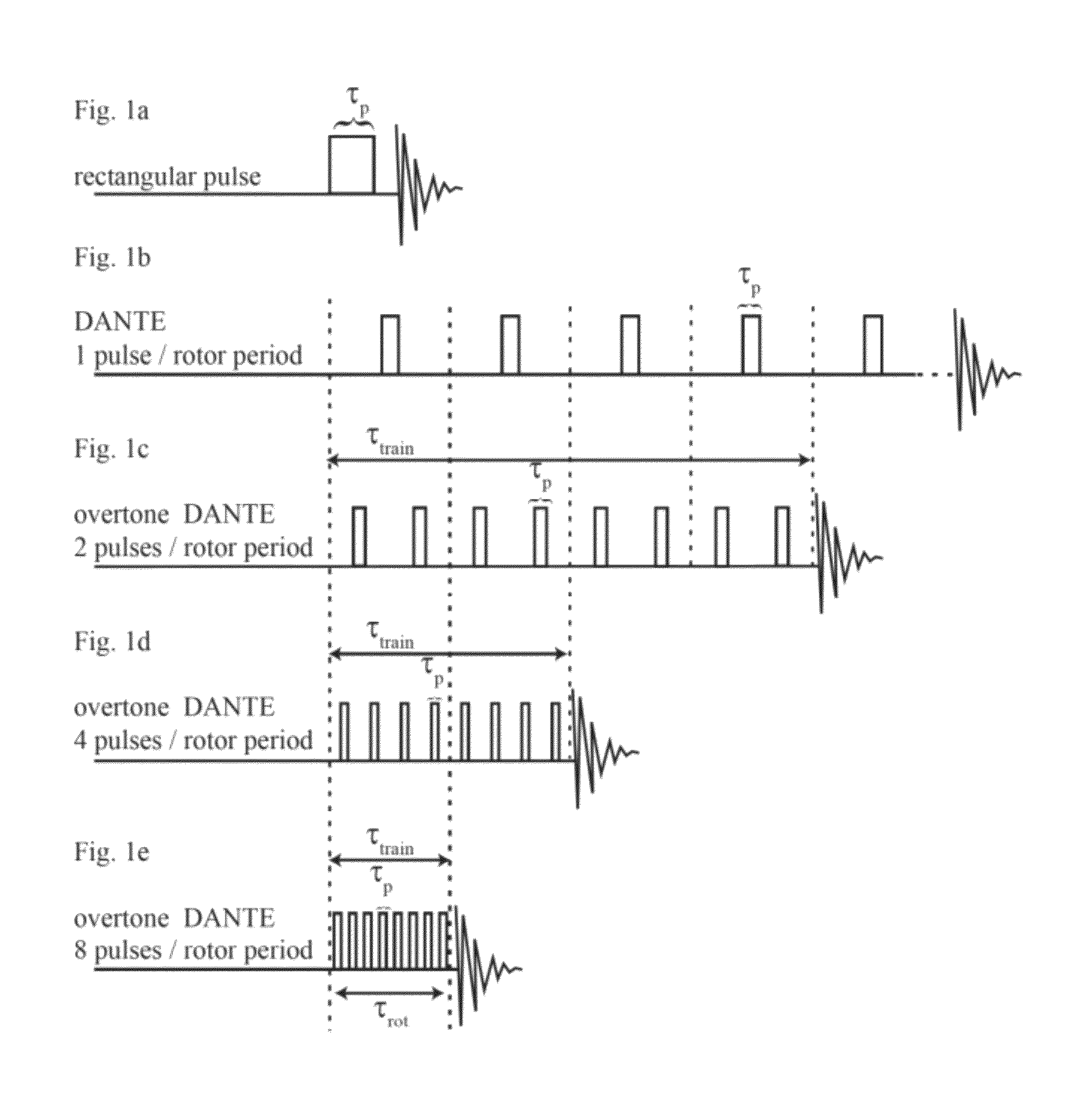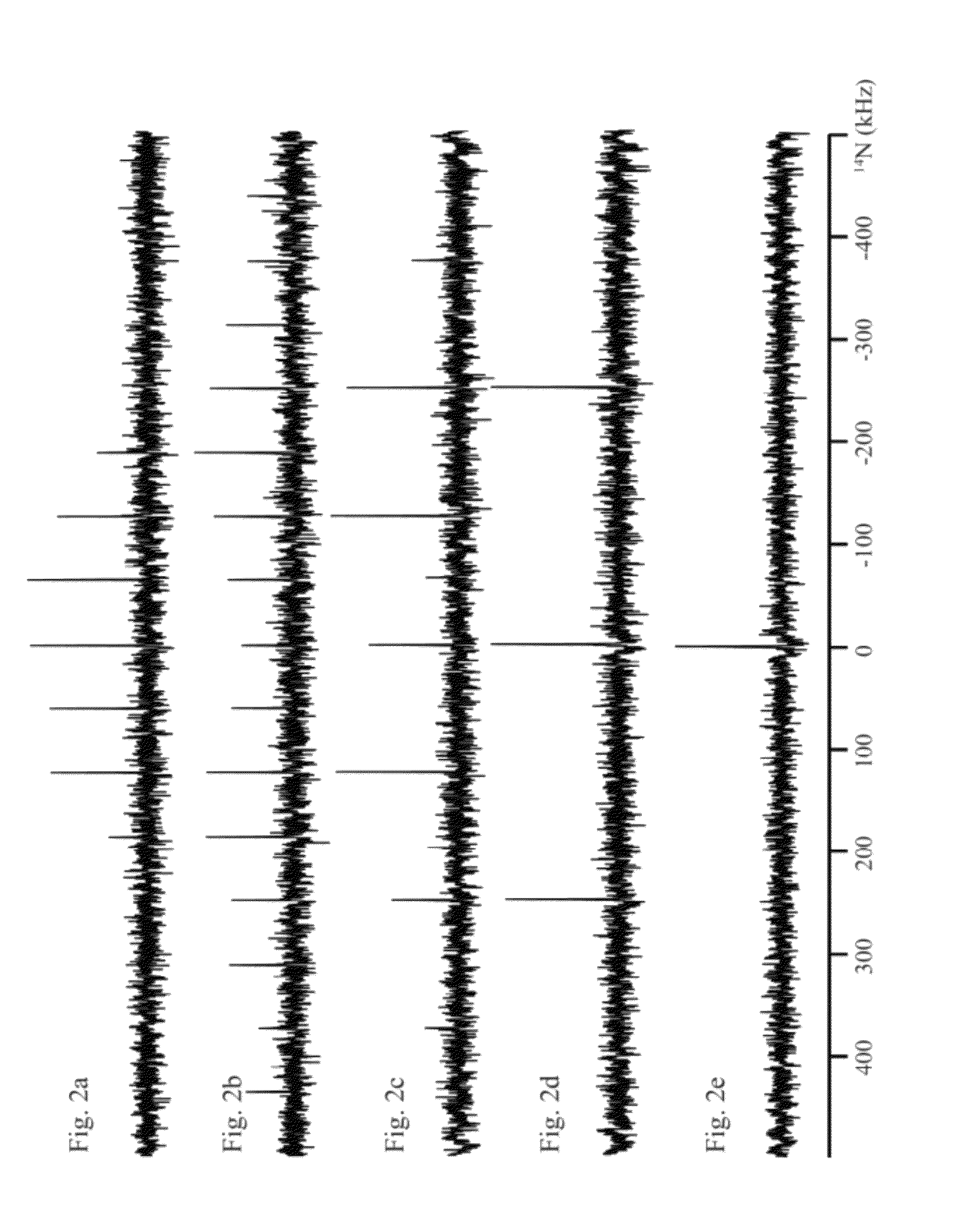Method for NMR spectroscopy
a spectroscopy and nmr technology, applied in the field of nmr spectroscopy, can solve the problems of limiting the sensitivity of experiments, not yet well-established spectroscopic techniques, etc., and achieve the effects of enhancing signal intensity, reducing signal loss, and improving signal intensity
- Summary
- Abstract
- Description
- Claims
- Application Information
AI Technical Summary
Benefits of technology
Problems solved by technology
Method used
Image
Examples
Embodiment Construction
[0051]FIG. 1 shows different possibilities for exciting a number of families of spinning sidebands that arise from large first-order quadrupole or hyperfine interactions. In the inventive method a conventional rectangular rf-pulse of duration τp, which is known from the state of the art, is replaced with a DANTE sequence, i.e. with a train of k·n pulses within k rotor periods of n pulses per rotor period with pulse duration τp. In the examples shown in FIG. 1b-e each train comprises 8 rf-pulses (due to shortage of space only 5 of 8 rotor periods are shown in FIG. 1b).
[0052]FIG. 1b shows a ‘basic’ DANTE sequence with n=1 pulse per rotor period. It should be noted that the number of pulses of the train given in the example is only exemplary. In practice the number of pulses per train is chosen such that a desired flip angle of the spin of the nuclei of interest is achieved by irradiating the DANTE sequence.
[0053]Instead of k rotor periods with n=1 pulse per rotor period and pulse dura...
PUM
 Login to View More
Login to View More Abstract
Description
Claims
Application Information
 Login to View More
Login to View More - R&D
- Intellectual Property
- Life Sciences
- Materials
- Tech Scout
- Unparalleled Data Quality
- Higher Quality Content
- 60% Fewer Hallucinations
Browse by: Latest US Patents, China's latest patents, Technical Efficacy Thesaurus, Application Domain, Technology Topic, Popular Technical Reports.
© 2025 PatSnap. All rights reserved.Legal|Privacy policy|Modern Slavery Act Transparency Statement|Sitemap|About US| Contact US: help@patsnap.com



